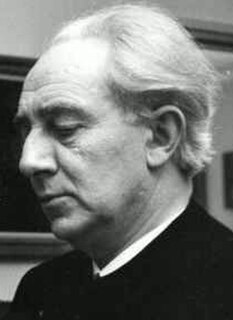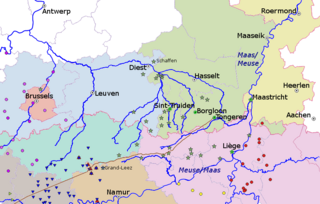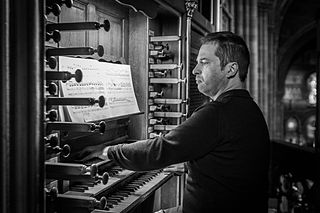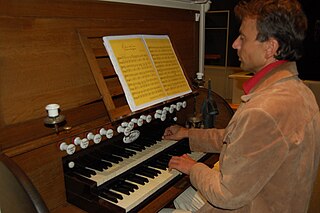
Flanders is the Dutch-speaking northern portion of Belgium and one of the communities, regions and language areas of Belgium. However, there are several overlapping definitions, including ones related to culture, language, politics, and history, and sometimes involving neighbouring countries. The demonym associated with Flanders is Fleming, while the corresponding adjective is Flemish. The official capital of Flanders is the City of Brussels, although the Brussels-Capital Region has an independent regional government. The government of Flanders only oversees the community aspects of Flanders life in Brussels, such as Flemish culture and education.

Hasselt is a Belgian city and municipality, and capital and largest city of the province of Limburg in the Flemish Region of Belgium. The Hasselt municipality includes the original city of Hasselt, plus the old communes of Sint-Lambrechts-Herk, Wimmertingen, Kermt, Spalbeek, Kuringen, Stokrooie, Stevoort and Runkst, as well as the hamlets and parishes of Kiewit, Godsheide and Rapertingen.

César-Auguste Jean-Guillaume Hubert Franck was a Romantic composer, pianist, organist, and music teacher who worked in Paris during his adult life.

Aristide Cavaillé-Coll was a French organ builder. He has the reputation of being the most distinguished organ builder of the 19th century. He pioneered innovations in the art and science of organ building that permeated throughout the profession and influenced the course of organ building, composing and improvising through the early 20th century. As the author of scientific journal articles about the organ construction details, he published the results of his research and experiments. He was the inventor of the symphonic organ being able to follow smooth and immediate dynamic changes like a symphonic orchestra. This goal was reached by: a) invention of harmonic flue and reed stops, such as the flûte harmonique, trompette harmonique, clairon harmonique, b) invention of divided windchest with 2-3 different wind pressure sections, c) creation of groups of stops allowing for fast dynamics changes without taking hands out of the keyboards by the organist, d) organ specification planning on the base of 'orchestral quartet". His most famous organs were built in Paris in Saint-Denis Basilica (1841), Église de la Madeleine, Sainte-Clotilde Basilica (1859), Saint-Sulpice church, Notre-Dame Cathedral, baron Albert de L'Espée's residence in Biarritz, and many others. After Cavaillé-Coll's death, Charles Mutin maintained the business into the beginning of the 20th century. The organ reform movement in the 20th century sought to return organ building to a more Baroque style; but since the 1980s, Cavaillé-Coll's designs have come back into fashion.

Alexander Tansman was a Polish composer, virtuoso pianist and conductor of Jewish origin, since 1938 a French citizen. One of the earliest representatives of neoclassicism, associated with École de Paris, Tansman was a globally recognized and celebrated composer.
Naji Subhy Paul Irénée Hakim is a Lebanese-French organist, composer, and improviser. He studied under Jean Langlais, and succeeded Olivier Messiaen as titular organist at the Église de la Sainte-Trinité, Paris.

Flor Peeters was a Belgian composer, organist and academic teacher. He was director of the Conservatorium in Antwerp, Belgium, and organist at Mechelen Cathedral from 1923 to his death in 1986.

Matthias Vanden Gheyn was a Flemish composer from the Baroque/Classical transition period. He is a descendant of the famous bell founding family of the same name. During his life, Vanden Gheyn was considered an outstanding virtuoso of the carillon and organ. He is most famous for his eleven preludes for carillon, which have become standard repertoire among carillonists worldwide since the early 1900s. His spot in history was earned in large part due to the tireless research of his biographer Xavier-Victor-Fidèle van Elewyck, a law and music scholar who considered Vanden Gheyn to be the greatest musician of the Southern Netherlands in the 18th century.

The Royal Carillon School "Jef Denyn" in Mechelen, Belgium, is the first and largest carillon school in the world. The Belgian government defines it as an "International Higher Institute for the Carillon Arts under the High Protection of Her Majesty Queen Fabiola". The school has trained many of the foremost carillonneurs of the twentieth and twenty-first centuries and houses a rich archive and library.
The Orchestre Philharmonique Royal de Liège (OPRL) is a Belgian symphony orchestra, based in Liège. The primary concert venue and administrative base of the OPRL is the Salle Philharmonique de Liège. The OPRL receives financial support from the Fédération Wallonie-Bruxelles, the City of Liège, the Province of Liège, the Région wallonne, and the Loterie Nationale.

The Groot Begijnhof of Leuven is a well preserved beguinage and completely restored historical quarter containing a dozen streets in the south of downtown Leuven. About 3 hectares in size, with some 300 apartments in almost 100 houses, it is one of the largest remaining beguinages in the Low Countries. It stretches on both sides of the river Dijle, which splits into two canals inside the beguinage, thus forming an island. Three bridges connect the parts of the beguinage. The complete beguinage is owned by the University of Leuven and used as a campus, especially for housing academics.

Ignace Michiels is a Belgian organist, choral conductor and organ teacher. He is internationally known as a concert organist.
Norbert H. J. Nozy is a contemporary Belgian conductor, music educator, and classical saxophonist.

The County of Flanders was an historic territory in the Low Countries.

The pagus or gau of Hasbania was a large early medieval territory in what is now eastern Belgium. It is now approximated by the modern French- and Dutch-speaking region called Hesbaye in French, or Haspengouw in Dutch—both being terms derived from the medieval one. Unlike many smaller pagi, Hasbania may never have corresponded to a single county, but already contained several in the 9th century. It is therefore described as a "Groẞgau", like the Pagus of Brabant, by modern German historians such as Ulrich Nonn.
Clément Loret was an organist, music educator, and composer of Belgian origin, French naturalized.

Vincent Warnier is a contemporary French classical organist.

Willem Tanke is an organist and acclaimed recitalist known for his interpretations of works by J.S. Bach, Max Reger, Olivier Messiaen and contemporary composers. In addition he is noted for his own musical language as an improviser and a performing composer. As a teenager, he was drawn especially to wanting to play the organ by the religiously-inspired music of J.S. Bach and Olivier Messiaen, and also John Coltrane.

The Symphony en la mineur, op. 24 by Louis Vierne is the composer's second symphonic score, after Praxinoë op. 22, and is the only symphony for orchestra by the blind organist of Notre-Dame de Paris who composed six Organ Symphonies.














